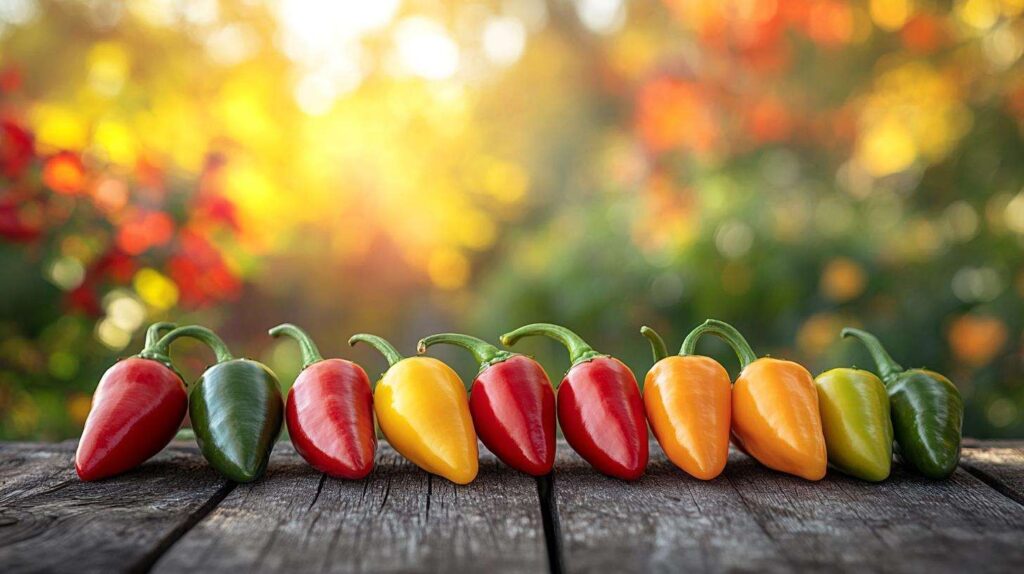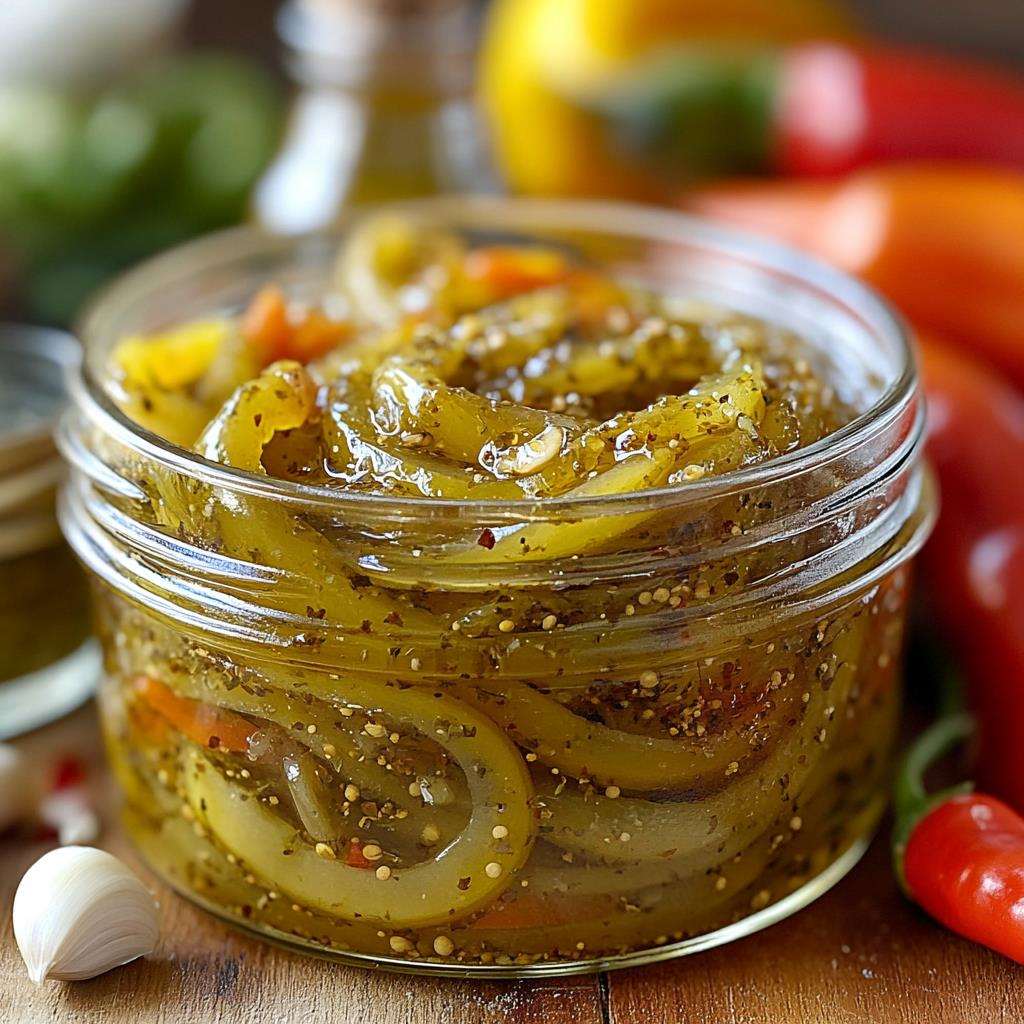Ever wondered about those bright, tangy peppers often spotted in sandwiches, pizzas, or jars labeled “pickled”? Meet banana peppers, the zesty little gems of the pepper world. Whether you’re a seasoned foodie or just someone who likes a bit of kick in their meals, banana peppers deserve a spotlight in your kitchen. 🌟
What Are Banana Peppers?
Let’s start with the basics. Banana peppers, sometimes called yellow wax peppers, are a type of chili pepper with a mild, tangy flavor. Despite their name, they don’t taste like bananas—but they do share the fruit’s sunny yellow color when ripe! 🟡
“Banana peppers are the ultimate mix of sweet and spicy—perfect for anyone who loves a bit of zing in their meals without setting their mouth on fire!”
Origin and History of Banana Peppers
Banana peppers trace their roots back to Central and South America, where they’ve been cultivated for centuries. As explorers and traders spread them across the globe, they quickly became a favorite in Mediterranean and Asian cuisines. Today, they’re a staple in gardens and kitchens worldwide.
Distinguishing Features: Sweet or Spicy?
Here’s a fun fact: banana peppers can be sweet or spicy, depending on the variety. Sweet banana peppers are mild and tangy, perfect for salads and sandwiches. On the other hand, hot banana peppers pack a subtle punch, ideal for pickling or stuffing. Think of them as the pepper world’s version of Jekyll and Hyde—mild yet feisty! 😄
Types of Banana Peppers: A Detailed Look
Not all banana peppers are created equal. Let’s break down the two main types:
Sweet Banana Peppers vs. Hot Banana Peppers
- Sweet Banana Peppers: Mild and slightly tangy, these are the go-to choice for sandwiches, salads, and mild pickles.
- Hot Banana Peppers: With a bit more heat (but still manageable), these are fantastic for adding a spicy kick to pizzas and stir-fries.
Popular Varieties and Their Uses
Some popular varieties include the Hungarian Yellow Wax (a hot variety) and the classic Sweet Banana Pepper. Each has its unique flavor profile, but both are versatile enough for various dishes.
Nutritional Benefits of Banana Peppers
Besides being delicious, banana peppers are packed with health benefits. They’re like nature’s multivitamins, offering a burst of nutrients in every bite.
Vitamins and Minerals: What Makes Them Healthy?
These peppers are rich in vitamins A, C, and B6, along with essential minerals like potassium and fiber. They’re great for boosting immunity, improving skin health, and supporting heart health.
Calorie Count and Dietary Benefits
| Nutrient | Amount per 100g |
|---|---|
| Calories | 27 kcal |
| Vitamin C | 100 mg |
| Fiber | 1.7 g |
| Potassium | 210 mg |
Low in calories and high in nutrients, banana peppers are perfect for anyone looking to eat healthy without sacrificing flavor. 🥗
How to Grow Banana Peppers at Home

Ever thought about growing your own banana peppers? It’s easier than you think and incredibly rewarding. Imagine stepping out into your garden and picking fresh peppers for dinner—talk about farm-to-table! 🌱
Choosing the Right Seeds and Soil
Start with high-quality seeds from a trusted source. Look for varieties labeled as sweet or hot, depending on your preference. As for soil, banana peppers thrive in well-drained, nutrient-rich soil with a pH of 6.0–6.8.
Optimal Growing Conditions and Tips
These peppers love warm weather. Plant them in a sunny spot and water them regularly, ensuring the soil stays moist but not soggy. Adding compost or fertilizer can help your plants grow lush and healthy.
Common Pests and How to Manage Them
Unfortunately, banana peppers aren’t immune to pests. Watch out for aphids, spider mites, and caterpillars. A simple solution? Use organic insecticidal soap or introduce beneficial insects like ladybugs to your garden.
Harvesting and Storing Banana Peppers
Once your banana peppers are ripe, it’s time to harvest. But how do you know when they’re ready?
Signs Your Peppers Are Ready to Harvest
Look for bright yellow or red peppers with firm, smooth skin. Avoid picking peppers with wrinkles or blemishes.
Proper Storage Techniques for Freshness
- Refrigeration: Store fresh peppers in a plastic bag in the fridge. They’ll stay crisp for up to two weeks.
- Freezing: Slice and freeze them for long-term storage.
There’s nothing quite like enjoying homegrown peppers all year round! 🫑
Cooking with Banana Peppers: Delicious Recipes
Ready to bring some zest into your kitchen? Banana peppers are incredibly versatile and can elevate your dishes from ordinary to extraordinary. Let’s dive into some mouth-watering recipes that are sure to impress your family and friends. 🍽️
Stuffed Banana Peppers: A Classic Favorite
Imagine biting into a tender banana pepper filled with savory goodness—sounds delightful, right? Here’s a simple recipe to get you started:
Ingredients:
| Ingredient | Quantity |
|---|---|
| Banana Peppers | 8 large peppers |
| Ground Beef or Turkey | 1 pound |
| Onion, chopped | 1 medium |
| Garlic, minced | 2 cloves |
| Cooked Rice | 1 cup |
| Tomato Sauce | 1 can (15 oz) |
| Cheddar Cheese, shredded | 1 cup |
| Salt and Pepper | To taste |
Instructions:
- Prepare the Peppers: Slice the tops off the banana peppers and remove the seeds. Rinse them under cold water.
- Make the Filling: In a skillet, sauté the onions and garlic until translucent. Add the ground meat and cook until browned. Stir in the cooked rice, half the tomato sauce, salt, and pepper.
- Stuff the Peppers: Fill each pepper with the meat and rice mixture. Place them in a baking dish.
- Bake: Pour the remaining tomato sauce over the peppers. Cover with foil and bake at 375°F (190°C) for 30 minutes.
- Add Cheese: Remove the foil, sprinkle cheddar cheese over the peppers, and bake for an additional 10 minutes until the cheese is melted and bubbly.
- Enjoy! Let them cool slightly before serving. Bon appétit! 😋
Pickled Banana Peppers: A Tangy Treat
If you’re a fan of that tangy crunch in your sandwiches or salads, pickled banana peppers are a must-try. Here’s a quick recipe:
Ingredients:

- Banana Peppers – 10 medium-sized, sliced into rings
- White Vinegar – 2 cups
- Water – 1 cup
- Sugar – 2 tablespoons
- Salt – 1 tablespoon
- Garlic Cloves – 3, smashed
- Black Peppercorns – 1 teaspoon
Instructions:
- Prepare the Brine: In a saucepan, combine vinegar, water, sugar, salt, garlic, and peppercorns. Bring to a boil.
- Add Peppers: Place the sliced banana pepper in a heatproof jar.
- Pour the Brine: Carefully pour the hot brine over the peppers, making sure they’re fully submerged.
- Seal and Store: Let the jar cool to room temperature, then seal it tightly and refrigerate. They’re ready to enjoy after 24 hours and can last up to a month. 🥒
Adding Banana Peppers to Everyday Dishes
Don’t limit yourself to recipes! Here are some simple ways to incorporate banana peppers into your daily meals:
- Pizzas and Sandwiches: Add sliced banana peppers for an extra layer of flavor.
- Salads: Toss in pickled banana peppers for a tangy crunch.
- Stir-Fries: Include them with your favorite veggies for a colorful, spicy kick.
- Omelets: Chop them up and mix into your morning eggs for a zesty start to the day.
Common Problems and Solutions
Even the best of us run into hiccups when growing or cooking with banana peppers. But don’t worry—we’ve got solutions to common problems you might face.
Why Are My Banana Pepper Turning Black?
If you notice black spots on your peppers, it’s likely due to a condition called blossom end rot, caused by calcium deficiency or inconsistent watering.
- Solution: Ensure your plants are watered evenly and consider adding calcium-rich fertilizer to the soil.
Overwatering and Its Impact on Growth
Too much water can lead to root rot and wilting plants.
- Solution: Allow the soil to dry out between watering sessions. Stick your finger an inch into the soil—if it’s dry, it’s time to water.
Pests and Diseases: Prevention and Remedies
Common pests include aphids, beetles, and slugs.
- Solution: Use natural repellents like neem oil or introduce beneficial insects. Regularly inspect your plants and remove any pests by hand when possible.
Banana Peppers in Global Cuisine
Banana peppers aren’t just a local favorite—they’re celebrated worldwide!
Popular Dishes Around the World
From Italian antipasto platters to Mexican salsas, banana pepper add a unique flavor that’s cherished globally.
How Different Cultures Use Banana Peppers
- Italy: Pickled and served with cured meats and cheeses.
- Greece: Stuffed with feta cheese and baked.
- Mexico: Chopped into salsas and sauces for tacos and burritos.
It’s amazing how one ingredient can bring so many cultures together! 🌍
Preserving Banana Peppers for Long-Term Use
If you have a bountiful harvest, preserving your banana peppers is a fantastic way to enjoy them year-round.
Freezing Banana Peppers: Step-by-Step Guide
- Wash and Dry: Clean the peppers thoroughly and pat them dry.
- Slice or Keep Whole: Decide whether you want them sliced or whole, depending on future use.
- Flash Freeze: Place them on a baking sheet and freeze for an hour.
- Store: Transfer the frozen peppers to airtight freezer bags. They can last up to 6 months. ❄️
Drying and Dehydrating Banana Peppers
Drying peppers concentrates their flavor, making them great for seasoning.
- Slice Thinly: Cut the peppers into thin rings.
- Arrange on Dehydrator Trays: Place them in a single layer.
- Dry: Set the dehydrator to 135°F (57°C) and dry for 8-12 hours.
- Store: Keep the dried peppers in airtight containers away from sunlight.
Fun Facts
Let’s sprinkle in some fun trivia to impress your friends at the next dinner party!
Did You Know? Fascinating Trivia
- Despite their mild flavor, banana peppers belong to the same species as the fiery cayenne pepper.
- The Scoville scale measures the spiciness of peppers. Banana peppers range from 0 to 500 Scoville Heat Units, making them very mild.
- They get their name from their resemblance in shape and color to—you guessed it—bananas! 🍌
The Role of Banana Peppers in Pop Culture
Banana peppers have made their way into songs, movies, and even art!
- They’ve been featured in cooking shows highlighting global cuisines.
- Artists have used their vibrant color in food photography and paintings.
- Chefs worldwide consider them a staple ingredient for adding flavor without overwhelming heat.
Last Bite
From their easy cultivation to their versatility in recipes, banana pepper are more than just a garnish—they’re a culinary powerhouse. Whether you’re spicing up a family dinner or exploring new cuisines, these peppers offer a delightful mix of flavor and nutrition.
“In the grand orchestra of flavors, banana peppers play the perfect harmony between sweet and spicy.”
So next time you’re at the grocery store or planning your garden, consider adding banana pepper to your list. Your taste buds will thank you! 🛒🌶️
If you’re looking for the ultimate side dish to wow your guests, the Best Spinach Artichoke Dip is an absolute must-try. Creamy, cheesy, and loaded with the savory flavors of tender spinach and tangy artichokes, this dip pairs perfectly with crispy pita chips, warm bread, or fresh veggie sticks. It’s a crowd-pleaser for game nights, dinner parties, or even a casual snack. Quick and easy to whip up, this dish brings restaurant-quality flavor straight to your table. Trust me, once you serve it, it’ll disappear faster than you can say “delicious!” 🥄🧄🧀
Happy cooking and gardening! 🌱👩🍳

